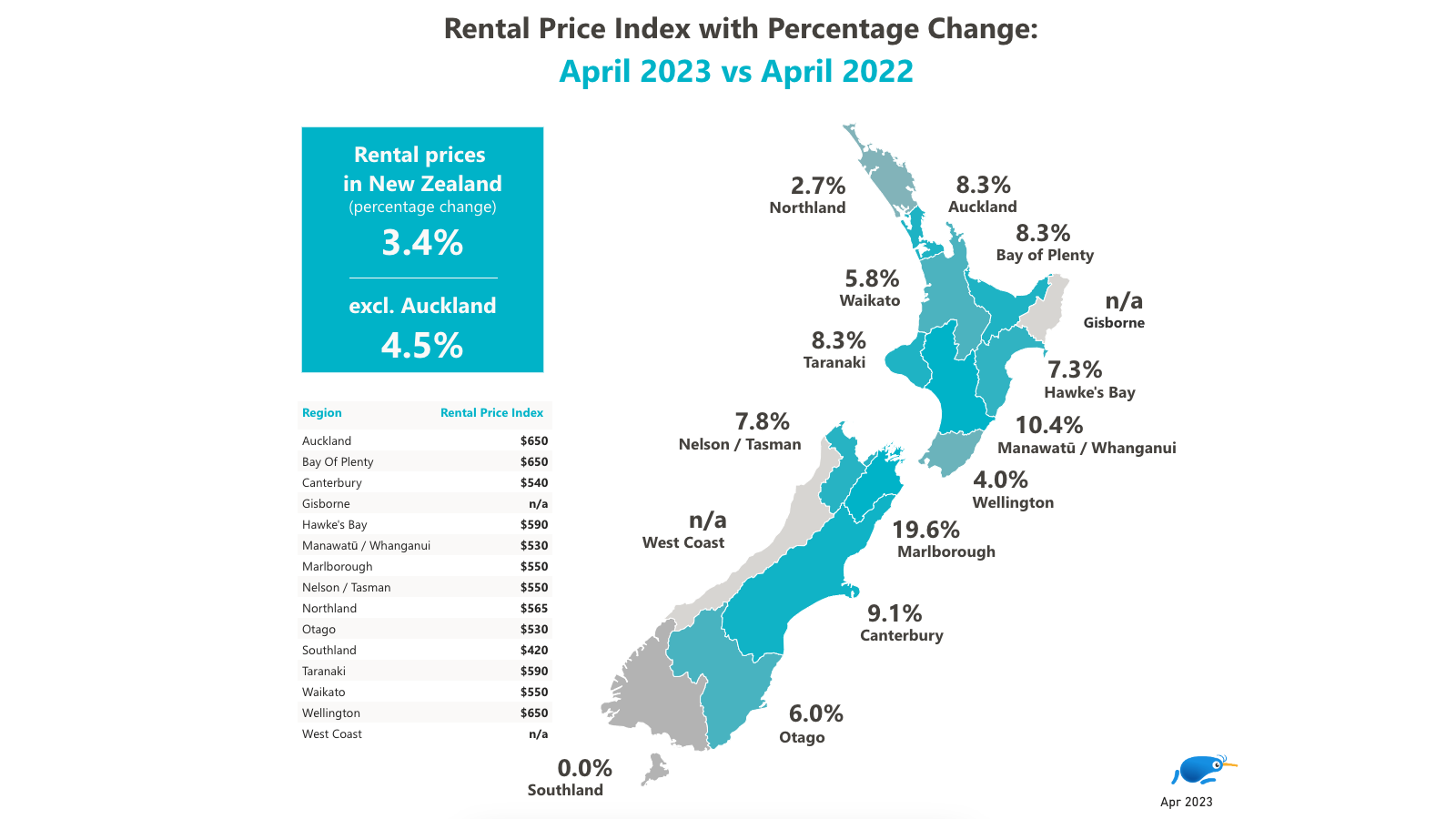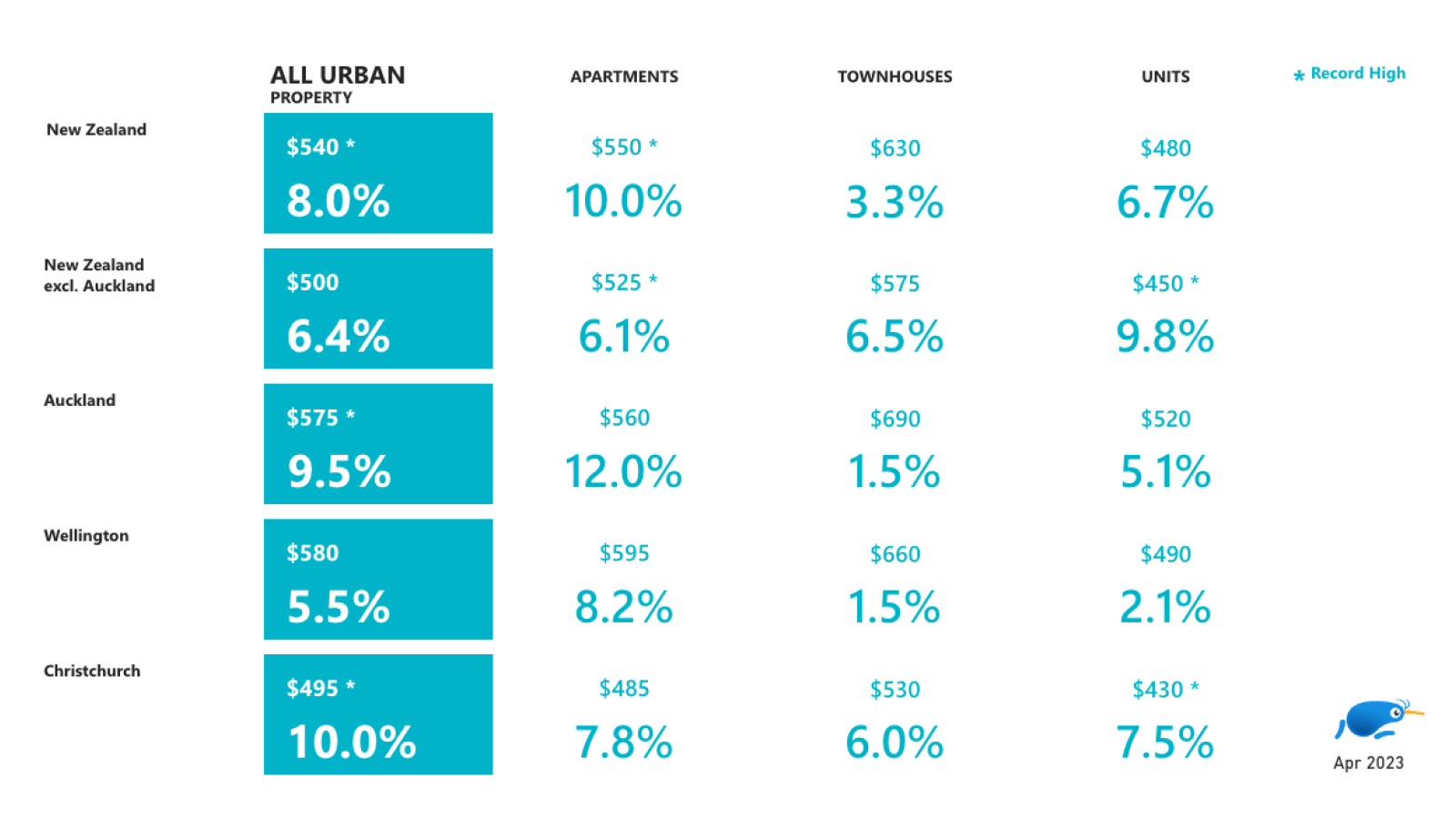News Next article
April Rental Price Index 2023
Rents continue to add to cost of living woes, except in the deep South
18 May 2023If you want to pay the same rent as last year, move to Southland, otherwise, it’s another month tenants are having to dig deep.
The Trade Me Rental Price Index for April shows Aotearoa is stubbornly clinging to the record median weekly rent of $600 for the third month in a row, a three per cent increase from April 2022’s $580, Trade Me Property Sales Director Gavin Lloyd said.
“We saw steep rises in places like Manawatū/Whanganui, where tenants were being asked to pay an extra $50 a week, increasing to $530.
“And it was almost the same in Canterbury with an extra $45 to $540,” Mr Lloyd said.
In fact every region across the motu had a year-on-year increase from April 2022, except Southland, Mr Lloyd said.
“Southland is obviously the place to be. Its median weekly rent is the cheapest in Aotearoa at $430, a massive $100 less than Manawatū/Whanganui, the next most affordable region.
“There are many factors why Southland’s median price isn’t rising, including it being one of the most affordable markets to buy in- it’s about $400,000 for a first home, meaning there aren’t the same pressures on the rental market,” Mr Lloyd said.
Demand on the up
April’s rental stock across the motu was down 19 per cent from 2022, while demand was up 36 per cent, Mr Lloyd said.
“So, what does that mean? Typically that means there is greater demand for rental places, which could result in a higher price as more people compete for the same places,” Mr Lloyd said.
Auckland had a huge drop off with 36 per cent fewer listings onsite than last year, which adds pressure to a tight market, Mr Lloyd said.
The Waikato, which is another one of our larger rental markets also saw supply slide by 13 per cent.
“The Manawatū/Whanganui well and truly bucked the trend - it had an increase of supply by 52 per cent, but a decrease of demand by 11 per cent,” Mr Lloyd said.
Other regions that saw a decent year-on-year increase in rental stock included Northland (41 per cent) and Taranaki (22 per cent). Taranaki’s demand also hiked up by 45 per cent.
Spotlight on Hawke’s Bay
Hawke’s Bay’s housing situation has been in the public consciousness since Cyclone Gabrielle.
The median rental price for April sat at $590, a drop on March’s $625, but still a $40 increase from April 2022,” Mr Lloyd said.
“Hawke’s Bay increased its rental stock by one per cent, going against the grain. This could be for a number of reasons, including anecdotally we heard some people were shifting their short term rentals to long term to help ease the pressure in the community,” Mr Lloyd said
“Demand in the Bay also dropped by two per cent.”
“Gisborne is now our smallest market for stock, falling 42 per cent year-on-year. Demand dipped by a similar number of 47 per cent.”
We’ve got that urban feeling
Urban properties (apartments, townhouses and units) had the largest percentage increases for rental properties in Aotearoa - up eight per cent year-on-year, Mr Lloyd said.
“Our urban properties reached an all time high median weekly rent of $540, which is an extra $40 a week to come out of tenants pockets,” Mr Lloyd said.
“Kiwi have fallen in love with the urban property. Across both the for sale and rental markets, we’re seeing strong interest in apartments, townhouses and units.”
Auckland and Christchurch both had record urban median rental prices.
Tenants in Tāmaki Makaurau are now being asked to pay $575 per week, up 10 per cent from $525, while Ōtautahi tenants are being asked to dig into their wallets for an extra $45, as they are also seeing a 10 per cent increase to $495.
The only property type across the motu to fall in median asking price from April 2022 were the 5+ bedroom houses - which was a minor 0.5 per cent dip.


